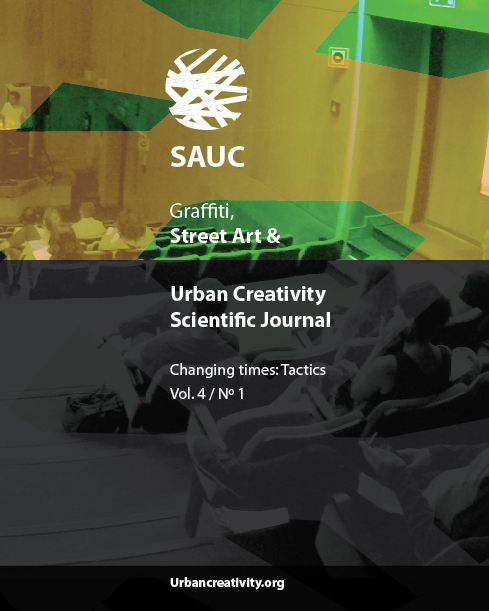Aesthetics of Change Multiculturalism and the street art of Footscray
DOI:
https://doi.org/10.25765/sauc.v4i1.121Keywords:
Multiculturalism, Gentri cation, Community, Culture, Street ArtAbstract
Street art is considered by many as a cultural practice, which like all cultures, has its diversity within it. Through the analysis of three case studies, this article demonstrates the value in using multiculturalism as a framework for developing street art. This study is situated in the Melbourne suburb of Footscray in Australia, from 2014 – 2018 which has been undergoing urban development and gentri cation. Each case study features artists that have created a street art piece in the suburb during the research period. There are varied opinions about what constitutes street art and how to de ne a street artist. In order to contain our research, the article focuses on artists who create legal murals. Through an exploration of their work, techniques and intent behind their art, the article presents an understanding of the diversity that exists within the street art community. Culture and multiculturalism have broad interpretations and this research suggests understanding multiple perspectives from a lived experience to political forms of management and integration. Theoretical literature, are reviewed to explore how they are at work in contemporary discourses of government, arts and community. The setting for this research, Footscray, is known as a culturally diverse inner-city suburb, that has been reportedly going through the process of gentri cation. We examine gentri cation’s impact on social diversity and also explore the role of street artists as both gentri es and activists against gentri cation. This article intends to prove that the application of multicultural theory to street art projects can create community resilience during times of urban transition. Through this research, we investigate street art as a manifestation of the cultural diversity of the community. As such, it demonstrates how an understanding of multiculturalism from di erent perspectives, can provide a framework for the development of future street art projects by artists, communities and organisations.
Downloads
Global Statistics ℹ️
|
182
Views
|
0
Downloads
|
|
182
Total
|
|
Downloads
Published
How to Cite
Issue
Section
License
Those authors who publish in this journal accept the following terms:
-
Authors retain copyright.
-
Authors transfer to the journal the right of first publication. The journal also owns the publishing rights.
-
All published contents are governed by an Attribution-NoDerivatives 4.0 International License.
Access the informative version and legal text of the license. By virtue of this, third parties are allowed to use what is published as long as they mention the authorship of the work and the first publication in this journal. If you transform the material, you may not distribute the modified work. -
Authors may make other independent and additional contractual arrangements for non-exclusive distribution of the version of the article published in this journal (e.g., inclusion in an institutional repository or publication in a book) as long as they clearly indicate that the work was first published in this journal.
- Authors are allowed and recommended to publish their work on the Internet (for example on institutional and personal websites), following the publication of, and referencing the journal, as this could lead to constructive exchanges and a more extensive and quick circulation of published works (see The Effect of Open Access).













